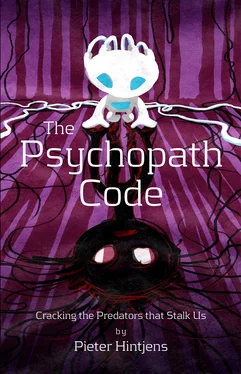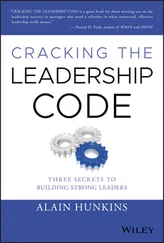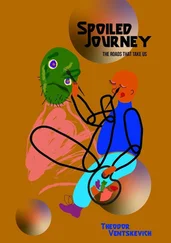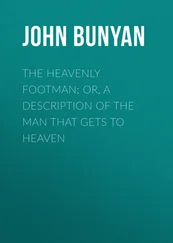After enough pain and theft, Bob may wake up and think of rebellion. So Mallory carries another weapon, which is fear. Before Bob gets to the point of revolt, Mallory has already been working hard. She redefines the relationship around fear. She creates an atmosphere of terror. It is so deep and tangible that Bob thinks of killing himself rather than challenge her.
As I explained in The Hunt , you can spot abuse victims by the nervous way they walk. It’s the deep-seated fear of tripping up and unleashing their tormentor’s anger. Mallory builds the fear by rewarding and punishing Bob in the most confusing way.
Mallory likes to change the rules arbitrarily, and make rules that are inconsistent, intrusive, and impossible to not break. The rules never apply to her. Bob has no appeal, and no voice. He must accept the rules, or leave. So, Mallory can punish Bob arbitrarily, and keep him always on the defense.
Complex and arbitrary rules are a staple of religious cults and other psychopathic organizations. These rules regulate what to eat, and when. They define dress codes for every occasion. They regulate language. They limit who may talk to whom, where, when, and about what topics.
Good rules are in fact important. They block that tactic of making up new rules to suit the purpose, so Bob is always a criminal. Bad rules become a prison. What we see often in psychopathic relationships is an asymmetry. The rules apply to Bob yet not to Mallory. This power imbalance is a sign of something rotten. When the justification for a rule is "Because I said so," it’s a sign of abuse.
When Bob breaks a rule, and often when he does not, Mallory will explode in sudden anger. When Mallory projects sudden anger, it can be dramatic and terrifying. She shifts her body language to look larger, smiles with her teeth bared. She opens her eyes wide. She advances and raises her arms as if to strike. She picks up objects to use as weapons, or to smash on the floor. She raises her voice, shouts a barrage of insults and provocations.
Our emotions are social communication tools. They are a way to negotiate others into behaving with us. They are our original, primeval language, displayed in face and body. Sudden anger defuses and moderates conflicts between individuals. We still have conflicts, yet anger reduces the risk of violence and injury. It lets us make mistakes that could end in conflict, and then step back before we go too far.
This is easy to see. If someone walks in your way on the sidewalk, you sidestep, smile, or nod. The little irritation (a raised eyebrow) turns into a tiny pleasant interaction. You both smile and nod. Take the same two people in two cars, trying to cross each other in a busy intersection. Instead of a polite nod, it can lead to intense sudden anger in both drivers.
What makes the difference is the cage the car forms around the driver. This cuts off verbal and non-verbal communication. It is easier for a car driver and a pedestrian to understand each other than two car drivers. When the brain gets annoyed it starts to show anger. If it gets a response, it calms down. If it gets no response, it moves into "fight or flight" mode. It is the same response you might have if someone walks in your way on the sidewalk, on purpose. Road rage is a basic survival instinct caught in the wrong context.
So the authentic anger display is a social cue. It evolved to tell another person: stop now, I am losing control of myself. It says, violence will happen if you do not step back now. It is a usually-reliable signal that most people cannot fake. The loss of cerebral control is central to the signal’s weight. We can learn to control anger, to calm it or to encourage it. It remains the same authentic mechanism in most people.
Mallory’s anger display is loud and explosive yet not authentic. She does not feel sudden anger, and does not lose control. Instead she puts on an anger mask taken from people she’s watched in the past. She may have several anger masks, taken from parents, siblings, or close relatives. When Mallory believes she faces a real threat, she does not display anger. She strikes, at once and without hesitation, or she turns and leaves.
Mallory’s volcanic anger display provokes the fight or flight response [51] https://en.wikipedia.org/wiki/Fight-or-flight_response
in Bob. No matter how he responds, he is in trouble. If he responds with anger, Mallory mocks and insults him and provokes him further. She does not back down, nor apologize. If Bob walks away or does not respond, she mocks him and insults him. She chases after him and threatens him with violence if he returns. If Bob gets violent, he will be accused of criminal assault.
It is how Internet trolls behave, getting people to argue, to humiliate them. If Bob accepts the violent language and anger, he takes a large burden of stress with him. It will consume him for hours, even days. If Bob fights back, he may feel better, yet he is losing control, and Mallory will use that.
So Bob learns to absorb the insults and anger in silence. This is how abusive relationships run. The outsider sees, if anything, violent arguments. One person tends to start the fights, and the other tends to take the blows.
There are, according to Wikipedia [52] https://en.wikipedia.org/?title=Anger
, three types of anger. There is sudden anger, which Mallory mimics to build that atmosphere of fear. There is passive anger, which she doesn’t seem to experience at all. And then there is aggressive anger [53] https://en.wikipedia.org/?title=Anger#Aggressive_anger
.
The symptoms for aggressive anger are a checklist for the late phases of a relationship with a psychopath. The accuracy of the list shocked me when I first read it. I’m going to quote it completely, in case someone edits it out of Wikipedia:
"The symptoms of aggressive anger are:
❂ Bullying, such as threatening people directly, persecuting, pushing or shoving, using power to oppress, shouting, driving someone off the road, playing on people’s weaknesses.
❂ Destructiveness, such as destroying objects as in vandalism, harming animals, destroying a relationship, reckless driving, substance abuse.
❂ Grandiosity, such as showing off, expressing mistrust, not delegating, being a sore loser, wanting center stage all the time, not listening, talking over people’s heads, expecting kiss and make-up sessions to solve problems.
❂ Hurtfulness, such as violence, including sexual abuse and rape, verbal abuse, biased or vulgar jokes, breaking confidence, using foul language, ignoring people’s feelings, willfully discriminating, blaming, punishing people for unwarranted deeds, labeling others.
❂ Manic behavior, such as speaking too fast, walking too fast, working too much and expecting others to fit in, driving too fast, reckless spending.
❂ Selfishness, such as ignoring others' needs, not responding to requests for help, queue jumping.
❂ Threats, such as frightening people by saying how one could harm them, their property or their prospects, finger pointing, fist shaking, wearing clothes or symbols associated with violent behavior, tailgating, excessively blowing a car horn, slamming doors.
❂ Unjust blaming, such as accusing other people for one’s own mistakes, blaming people for your own feelings, making general accusations.
❂ Unpredictability, such as explosive rages over minor frustrations, attacking indiscriminately, dispensing unjust punishment, inflicting harm on others for the sake of it, using alcohol and drugs, illogical arguments.
❂ Vengeance, such as being over-punitive. This differs from retributive justice, as vengeance is personal, and possibly unlimited in scale."
Читать дальше












